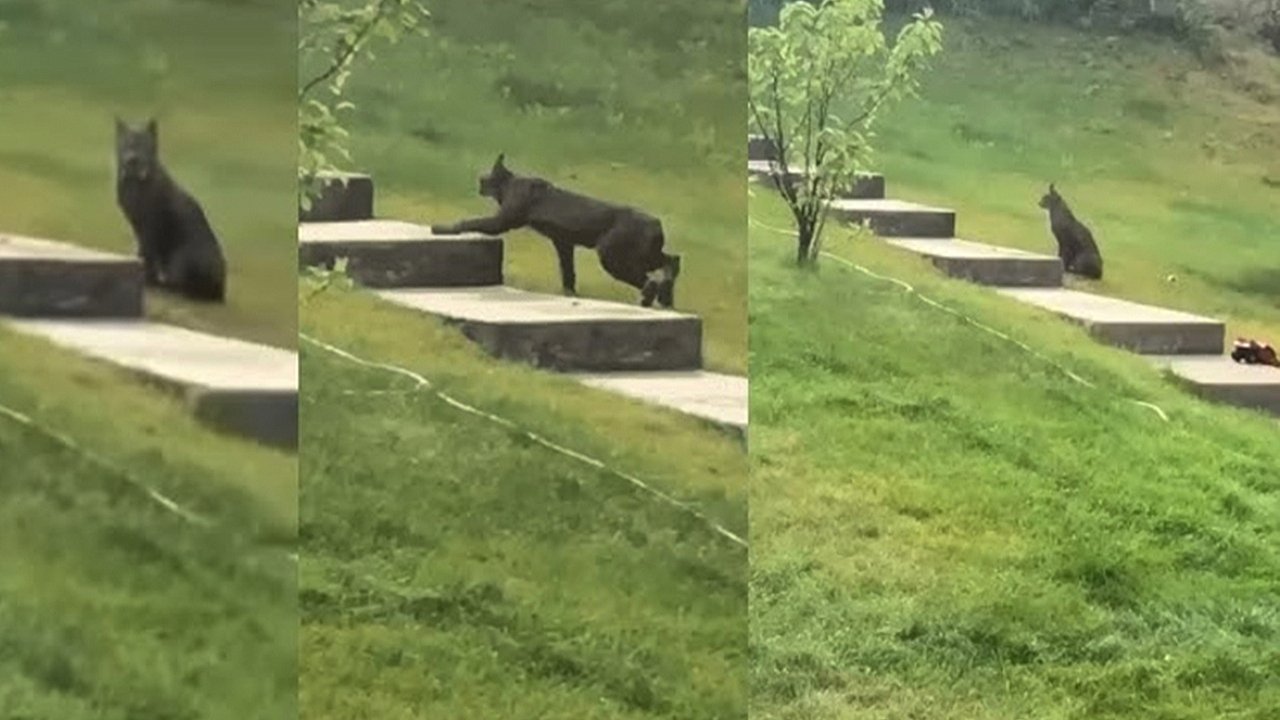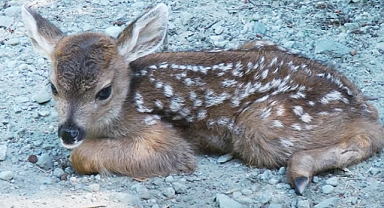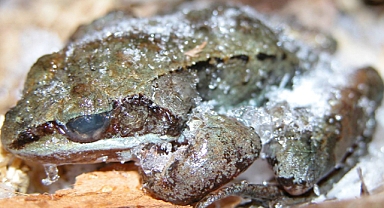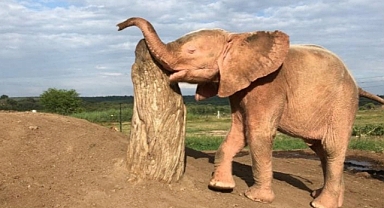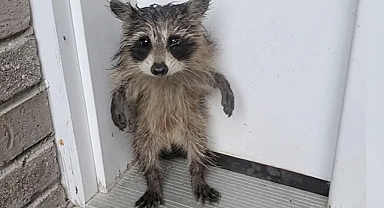A Once-in-a-Lifetime Wildlife Encounter: black Canada lynx Spotted in Yukon
On August 29, 2020, in the vicinity of Whitehorse, Yukon, Canada, wildlife biologist Thomas Jung witnessed an event of remarkable rarity. Armed with only his smartphone, he recorded what is believed to be the first confirmed footage of a melanistic Canada lynx (Lynx canadensis). Typically, these elusive wild cats exhibit a silvery-gray coat in winter and a darker reddish-brown hue during summer. However, the lynx that Jung encountered was draped in black fur, a phenomenon known as melanism. This color variation is exceedingly rare among the species, making this sighting particularly significant for experts studying genetic diversity in lynx populations.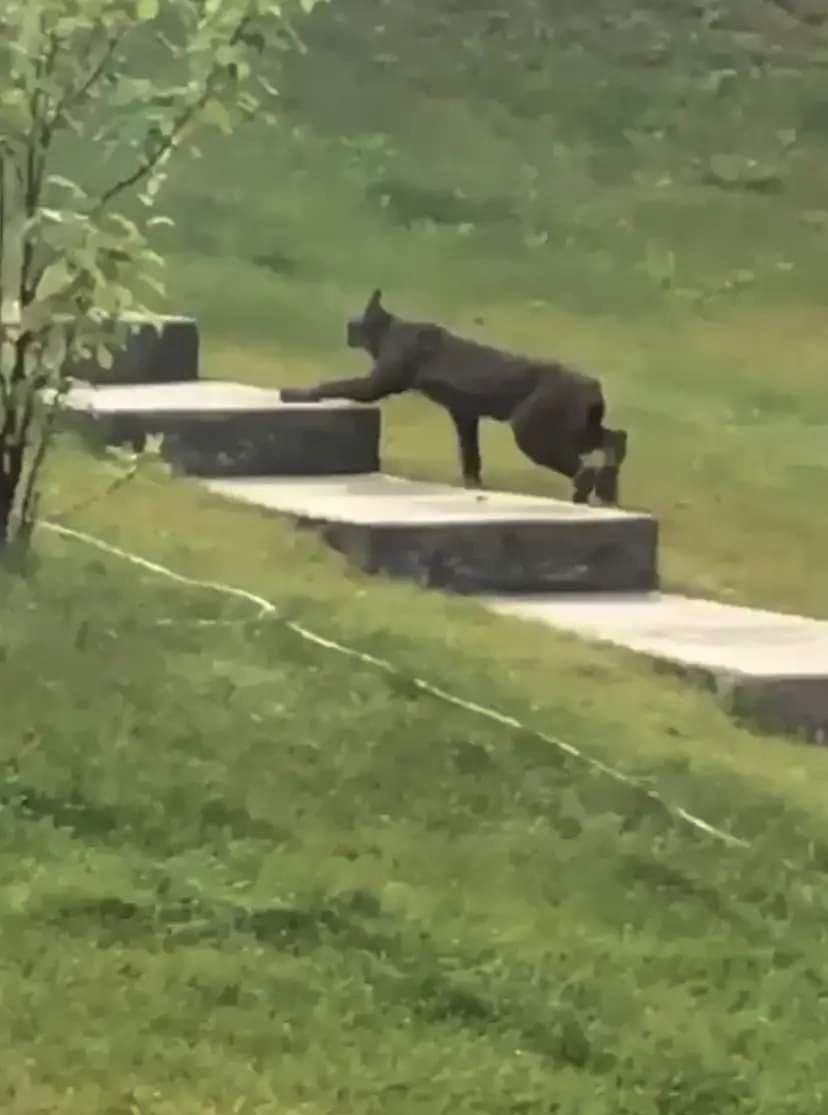
Jung, who works with the Government of Yukon’s Department of Environment, detailed his observations in a research paper. He noted that color polymorphism is exceptionally uncommon within the Lynx genus. The exact evolutionary advantage or disadvantage of melanism in these animals remains unclear, but Jung suggests that a dark coat might hinder their ability to camouflage, particularly in winter.
The Canada lynx relies on stealth and its natural coloration to hunt prey such as the snowshoe hare (Lepus americanus). A black coat would likely stand out against the snowy backdrop, making hunting significantly more challenging. This could explain why melanistic individuals are so rarely seen in the wild.
Jung observed the black lynx from a distance of approximately 50 meters (160 feet). The animal appeared relatively unbothered by nearby human activity, though a barking dog in the background of the footage may have ultimately encouraged it to retreat into the wilderness.
Despite the brief nature of the encounter, the video footage has been analyzed and confirmed by several experts to indeed feature a Canada lynx. Jung's report describes the lynx’s black fur interspersed with whitish-gray guard hairs, particularly around the facial ruff, rostrum, and dorsal regions. This extraordinary sighting serves as a reminder of the importance of being observant in nature. With a smartphone in hand, anyone could potentially document a previously unknown phenomenon in the natural world.
While Canada lynx typically exhibit a stable coloration, variations in coat color are more commonly observed in other species such as wolves and bears. The role of color in animal survival strategies is significant, influencing factors such as predation, camouflage, and thermoregulation. Unfortunately, environmental changes driven by human activity may also contribute to shifts in wildlife coloration over time. Monitoring genetic and color variations in animal populations can offer valuable insights into how species adapt to shifting climates and ecosystems. Jung highlights that Canada lynx are already facing increased competition from coyotes (Canis latrans), a situation exacerbated by climate change-induced alterations in snow depth. For melanistic lynx, the inability to blend into their environment during winter could prove to be a substantial disadvantage, further limiting their survival chances.
Jung’s findings have been officially documented in the scientific journal Mammalia, adding a new layer of understanding to the fascinating and complex world of wildlife genetics and adaptation.
On August 29, 2020, in the vicinity of Whitehorse, Yukon, Canada, wildlife biologist Thomas Jung witnessed an event of remarkable rarity. Armed with only his smartphone, he recorded what is believed to be the first confirmed footage of a melanistic Canada lynx (Lynx canadensis). Typically, these elusive wild cats exhibit a silvery-gray coat in winter and a darker reddish-brown hue during summer. However, the lynx that Jung encountered was draped in black fur, a phenomenon known as melanism. This color variation is exceedingly rare among the species, making this sighting particularly significant for experts studying genetic diversity in lynx populations.

Jung, who works with the Government of Yukon’s Department of Environment, detailed his observations in a research paper. He noted that color polymorphism is exceptionally uncommon within the Lynx genus. The exact evolutionary advantage or disadvantage of melanism in these animals remains unclear, but Jung suggests that a dark coat might hinder their ability to camouflage, particularly in winter.
The Canada lynx relies on stealth and its natural coloration to hunt prey such as the snowshoe hare (Lepus americanus). A black coat would likely stand out against the snowy backdrop, making hunting significantly more challenging. This could explain why melanistic individuals are so rarely seen in the wild.
Jung observed the black lynx from a distance of approximately 50 meters (160 feet). The animal appeared relatively unbothered by nearby human activity, though a barking dog in the background of the footage may have ultimately encouraged it to retreat into the wilderness.
Despite the brief nature of the encounter, the video footage has been analyzed and confirmed by several experts to indeed feature a Canada lynx. Jung's report describes the lynx’s black fur interspersed with whitish-gray guard hairs, particularly around the facial ruff, rostrum, and dorsal regions. This extraordinary sighting serves as a reminder of the importance of being observant in nature. With a smartphone in hand, anyone could potentially document a previously unknown phenomenon in the natural world.
While Canada lynx typically exhibit a stable coloration, variations in coat color are more commonly observed in other species such as wolves and bears. The role of color in animal survival strategies is significant, influencing factors such as predation, camouflage, and thermoregulation. Unfortunately, environmental changes driven by human activity may also contribute to shifts in wildlife coloration over time. Monitoring genetic and color variations in animal populations can offer valuable insights into how species adapt to shifting climates and ecosystems. Jung highlights that Canada lynx are already facing increased competition from coyotes (Canis latrans), a situation exacerbated by climate change-induced alterations in snow depth. For melanistic lynx, the inability to blend into their environment during winter could prove to be a substantial disadvantage, further limiting their survival chances.
Jung’s findings have been officially documented in the scientific journal Mammalia, adding a new layer of understanding to the fascinating and complex world of wildlife genetics and adaptation.
